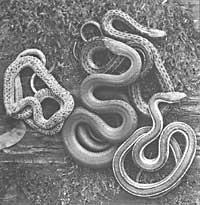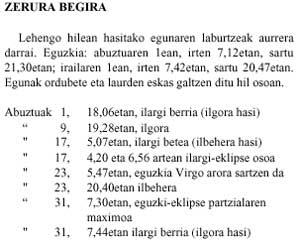Worms and time travel
1990/02/01 Elhuyar Zientzia Iturria: Elhuyar aldizkaria
Einstein's theory of relativity does not at least formally deny the journey in time. However, theoretical physicists have not been able to prove that such trips are possible.
Felicity Mellor and Ian Moss, physicists at the Newcastle-upon-Tyne University, have stated that some problems can be solved using “wormholes”. Worm holes are like bridges that connect the different parts of space/time.
Worms are a good solution to the relativity equation. They connect space-time distant parts. To understand how they can be, imagine two points at the two ends of an apple. A worm can move in two ways: above the surface of the apple tree or piercing the apple from side to side. Of course, the second road is shorter.
Unfortunately, the calculations of Stephen Hawkins and Roger Penros have shown that common matter cannot travel through a wormhole. This is because the wormhole has formed when a massive star has collapsed due to its gravity. This would generate a singularity, a point at which the mass has been compressed to infinite density.

This singularity would be surrounded by a barrier, called the Cauchy horizon, which would prevent matter from traveling through the pit. If the traveler tried to cross the Cauchy barrier, he would suffer immense energy.
Recently, Kpi Thorne of the California Institute of Technology has taken care of the problem. Thorne and his companions study the characteristics of wormholes composed of exotic materials. Exotic matter violates the basic law of pressure and density. Thorne and his companions demonstrated that it is possible to travel through a wormhole of this matter.
The time machine proposed by them uses a variation of the twin paradox. The twin paradox is a well-known consequence of the theory of relativity. If one of the twins traveled to a nearby star with the speed of light, the dilation of time would lead him to be younger than his brother who had remained on Earth upon returning.
Thorne and his companions propose that one of the twins would undertake the journey with one end of the wormhole. The other twins would remain at the other end of the wormhole. On the return of the traveled twin, the two brothers would have a different age, but the two ends of the worm would be united. Then, the two brothers would be able to travel in time, without moving from where they are.
Mellor and Moss have not used exotic matter to deal with the problem. Black and worm holes have considered that they are electrically charged and have studied the characteristics of their Cauchy horizons in the hypothesis of a closed universe. According to his calculations, the horizon of the Cauchy is not impassable and therefore can be a journey in time.
This is only a theoretical physics and seems to be far from everyday reality. However, it may be closer than we think.

Gai honi buruzko eduki gehiago
Elhuyarrek garatutako teknologia





